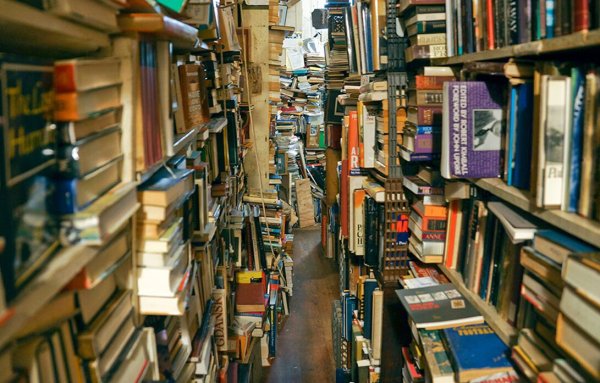The most memorable of the books I read this year, listed more or less in the order I read them.
Fiction
- Nathanael Ian Miller, The Memoirs of Stockholm Sven. A misfit seeks isolation in the remote Svalbard archipelago but instead finds social connection in the icebound wastes; utterly charming.
- Raymond Chandler, The Long Goodbye. I re-read all of Chandler, in the Library of America edition, and this one is still my favorite, one of the great hard-boiled novels. Chandler had real problems writing women and more than one of the Marlowe books are ruined by the totally implausible female characters. This one shows his strengths, being primarily about male friendship.
- Willa Cather, The Professor’s House. I’ve also been working my way through Cather, who I love unconditionally. She’s best known for her early Prairie Trilogy, which is wonderful, but in this book she begins to tackle subjects outside rural Nebraska. A strange, almost plotless story, it somehow stayed in my head more than anything else I read this year.
- Stefan Hertmans, War and Turpentine. A prizewinning and wonderfully translated book that vividly reconstructs an ordinary Belgian life in the early 20th century, and the First World War. It’s billed as a novel though it is based on the author’s own grandfather’s notebooks; intense and extraordinarily moving.
- Haruki Murakami, 1Q84. Simultaneously engrossing and inexplicable in a manner that only Murakami can pull off. It’s very long and very weird, and trying to describe it in more detail seems pointless. But I can report I was never once tempted to stop reading.
- Ursula K. LeGuin, The Left Hand of Darkness. I read this as a teenager and can now safely say it went over my head; re-reading as an adult I was completely bowled over. Perhaps LeGuin’s best single book. It is most often discussed for its portrait of a society without fixed gender roles. But what elevates it to greatness is how much else is going on at the same time: the nature of war, politics and diplomacy, and some of the finest arctic survival writing.
- Varlam Shalamov, Sketches of the Criminal World: Further Kolyma Stories. For literature about surviving cold and human cruelty, there is little to top Shalamov’s Kolyma Stories; this second volume continues his great documentary project of life in the gulag. It’s rewarding, though the whole thing is a lot. Someone should put together an edited selection from both volumes, structured to give a clearer chronology of Shalamov’s time in the camps; that would probably be more accessible for most people.
- Maggie O’Farrell, The Marriage Portrait. A gripping and immediate piece of historical fiction, portraying a child bride struggling with the fear and claustrophobia of life in an Italian court in the Medici era.
Nonfiction
- Romila Thapar, Gazing Eastwards: Of Buddhist Monks and Revolutionaries in China, 1957. An idealistic Indian historian visits Mao’s China and is gradually disillusioned. The book is itself a historical artifact documenting an unusual interaction between the two huge Asian nations. For more, see my review.
- David Edmonds, Parfit: A Philosopher and his Mission to Save Morality. Biographies of intellectuals tend to be either more about the work or more about the life. In Parfit’s case the division did not exist, and much of the interest of this book is in how his pathbreaking work in ethics is reflected (or not) in his life decisions.
- Katherine Rundell, The Golden Mole and Other Living Treasures. Rundell’s occasional series of natural-history essays in the London Review of Books has been one of my favorite things in the magazine; this book collects them and adds more. It’s an absolute treasure, with so many perfect openings (“The Roman poet Horace was stridently anti-giraffe”) and brilliant one-liners that it must be savored in small doses.
- Daniel James Brown, The Boys in the Boat. Inspirational sports books are not my normal fare, but this one, about the US rowing team that took gold at the 1936 Olympics in Berlin, is great. The effort and reward of training and competition really come through. It’s most interesting, though, as a slice of social history: almost everything about the key drivers of the story–sports, social class and America’s position in the world–has since changed drastically.
- Tyler Cowen, GOAT: Who Is the Greatest Economist of All Time and Why Does It Matter? A surprisingly personal and consistently thought-provoking engagement with the great historical figures of economics. It’s definitely not an “economics for beginners” book; to appreciate it you should have some familiarity with Keynes, Hayek et al. already. For me, it was pitched at just the right level, and there was lots of new info and fresh takes. As Tyler likes to say, “interesting throughout.”
- Max Weber, Charisma and Disenchantment: The Vocation Lectures. Perhaps the shortest and most accessible introduction to the GOAT of social thought. This new translation is concise and conversational, virtues not normally associated with Weber. Much of what he covers in these famous lectures is still quite relevant a century on; for an example see this excerpt.
Previous lists:

